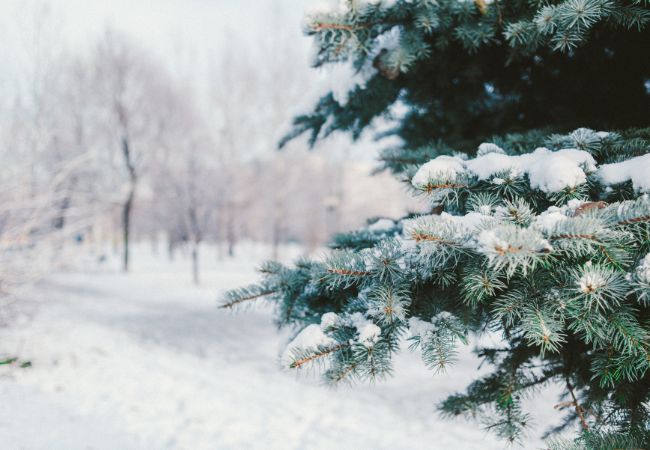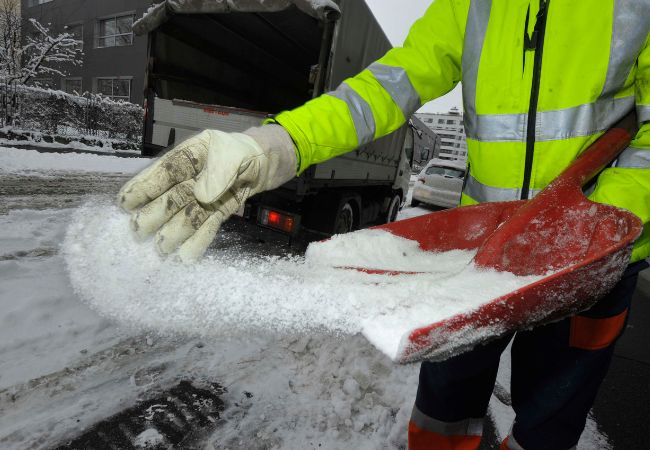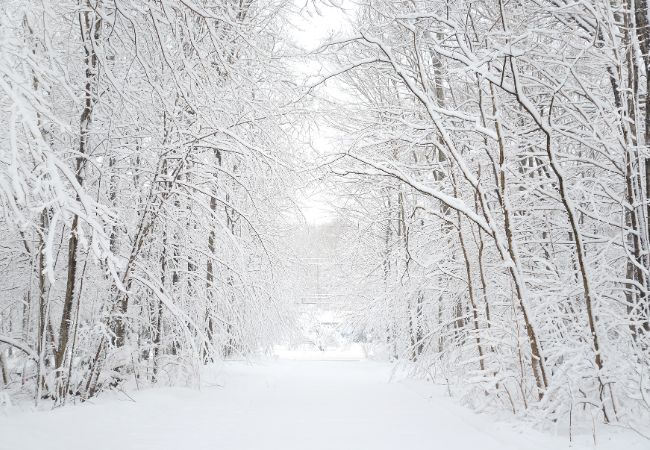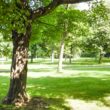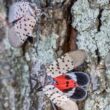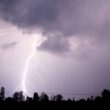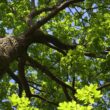As the winter chill sets in across Massachusetts, homeowners and commercial property managers brace for the season’s challenges, particularly when it comes to safeguarding their properties from winter tree damage. At Regal Tree & Shrub Experts, we understand these challenges intimately. Protecting your trees through the harsh Massachusetts winter requires knowledge, preparation, and sometimes the help of professionals. By understanding the challenges and taking proactive steps, you can ensure the health and beauty of your trees all year round.
In this guide to winter tree damage, you’ll learn:
- How cold weather harms trees with lasting damage such as frost cracks and sunscald
- Why broadleaved evergreens, like azaleas and rhododendrons, get winter burn (brown, dried, and shriveled leaves in winter) and may even die
- What de-icing salt does to your trees and shrubs, even after winter is over, and why that kills even mature plants
- Which types of trees are most susceptible to breakage from heavy snow and freezing rain
Most importantly, you’ll learn the best preventive measures for the most common types of winter tree damage, giving them the best chance to emerge unscathed in spring.
The Impact of Cold Temperatures on Trees: Frost Cracks and Sunscald
The serene winter landscape in Norfolk, Bristol, and Middlesex counties brings with it a chill that can have profound effects on our local trees. While many species are resilient to cold weather, extreme cold temperatures can lead to specific winter tree damage issues like frost cracks and sunscalds.
Frost cracks occur when the temperature drops so swiftly that the outer layer of wood contracts more quickly than the inner layer, causing a longitudinal crack. These cracks can be startlingly loud when the bark splits apart and often appear on the south or southwest side of the tree, where sun exposure is greatest. While they can heal over time, frost cracks can reappear in the same place in subsequent winters. They also create an entry point for pests and diseases.
Sunscald, on the other hand, is a type of injury that usually affects the south or southwest side of young and thin-barked trees. During winter, the bark on this side warms up on sunny days, causing the cells to come out of dormancy and become active. When the temperature drops rapidly at sunset or as weather changes, these active cells and tissues can get damaged, leading to sunscald. This condition manifests as elongated, sunken, dried, or cracked areas of dead bark.
How to Prevent Frost Cracks & Sunscald
There are several preventive measures you can take to protect these trees. Wrapping trunks with tree wraps or plastic guards in the fall can help, especially for younger trees. For mature trees, maintaining overall health through proper watering, mulching, and professional pruning services is key to increasing their resilience to cold weather damage.
Winter Drought and Foliage Desiccation: The Silent Threat to Broadleaved Evergreens
Winter drought presents a silent yet significant challenge, particularly for broadleaved evergreens. These plants retain their leaves throughout the year, making them especially vulnerable to the effects of winter drought. During this period, the ground becomes too hard and cold for tree roots to absorb water effectively. This issue is compounded when the surrounding air is dry and windy.
Foliage desiccation in broadleaved evergreens occurs when these trees or shrubs lose more water through their leaves than they can replenish from the frozen soil. As a result, the leaves may become brown, dry, and brittle – a condition often referred to as “winter burn.” Common broadleaved evergreens in New England, such as Rhododendrons, Azaleas, and Boxwoods, are particularly prone to this kind of damage.
How to Prevent Winter Burn with Anti-Desiccant Sprays
One effective way to combat foliage desiccation is the use of anti-desiccant sprays. These sprays form a protective coating over the leaves, reducing the amount of water that escapes. This can be particularly helpful for newly planted trees and shrubs that haven’t yet established a robust root system. Anti-desiccants are most effective when applied in late fall before the onset of freezing temperatures and then again in mid-winter during a thaw.
Apart from using anti-desiccants, maintaining the overall health of the tree is crucial. This includes:
- Deep watering of the tree during fall, ensuring adequate moisture levels going into winter.
- Applying a thick layer of mulch around the base of the tree to help retain soil moisture and regulate soil temperature.
- Avoiding fertilization in late summer or fall as this can stimulate new growth that will not have time to harden off before winter.
Salt Damage to Trees: A Winter Hazard and its Alternatives
In Massachusetts and neighboring Rhode Island, where icy roads and walkways are a common winter occurrence, the use of road salt is a widespread practice for ensuring safety. However, this solution comes with a significant downside for our urban and suburban greenery, particularly trees. Salt damage can be a serious issue, affecting both the soil and the trees themselves.
Understanding Salt Damage
When salt (sodium chloride) is used for de-icing, it can leach into the soil, altering its composition and making it difficult for trees to absorb water and nutrients. Salt can also lead to osmotic stress, where the presence of excess sodium in the soil draws moisture out of the tree roots, leading to dehydration.
Symptoms of salt damage in trees include discolored foliage, stunted growth, and in severe cases, tree death. Trees located near roads and driveways are particularly at risk.
Alternatives to Road Salt
- Sand or Grit: While they do not melt ice, sand, and grit can provide traction on icy surfaces. They are environmentally safe and do not cause harm to trees or soil. However, they might require frequent reapplication and cleanup post-winter.
- Calcium Magnesium Acetate (CMA): CMA is a salt alternative that is less corrosive and less harmful to vegetation. It’s biodegradable and acts similarly to salt in melting ice. While more expensive, it’s a safer option for areas near trees and other plantings.
- Potassium Chloride: This is a less harsh chemical alternative to sodium chloride. It’s less likely to harm plants but can still pose risks in high concentrations.
- Beet Juice and Cheese Brine Mixtures: These organic alternatives are often mixed with traditional salt solutions to reduce the amount of salt needed. They lower the freezing point of water and are less harmful to plant life.
- Heated Mats or Electric De-icing Cables: For small areas like walkways and driveways, heated mats or electric de-icing cables can be effective. They require electricity but are safe for vegetation and offer a reusable solution.
How to Prevent Winter Salt Damage to Trees
- Creating physical barriers, such as wrapping burlap around the base of trees or around smaller shrubs, can help protect against salt spray from roads.
- Regular watering and mulching can help flush out salt accumulation from the soil.
- Planting salt-resistant tree species in areas prone to salt exposure can be a proactive approach.
Snow and Ice Accumulation: Understanding the Risks to Your Trees
Winter often brings with it a blanket of snow and ice that, while beautiful, can pose significant risks to the health and safety of trees.
One of the most immediate risks to trees during winter is the added weight of snow and ice on branches. This is particularly true after heavy snowfall or freezing rain events. The weight can cause branches, especially those that are weak or diseased, to bend or break. This not only damages the tree but can also pose a hazard to nearby structures, vehicles, and even people.
Types of Trees Most at Risk from Snow and Ice Storms
While all trees can be affected by heavy snow and ice, certain types are more susceptible than others.
- Evergreens with their needle-like leaves hold more snow compared to deciduous trees, which lose their leaves in winter.
- Young, newly planted, or previously stressed trees are also more vulnerable to damage from the weight of snow and ice.
- Trees with a dense canopy, multiple co-dominant stems, or a history of poor pruning are at greater risk.
- The angle of branches also matters; those with acute angles to the trunk are more likely to accumulate snow and ice and subsequently break under the weight.
Apart from the immediate physical damage, the effects of heavy snow and ice can have long-term impacts on a tree’s health. Broken limbs create open wounds that can be entry points for pests and diseases. Additionally, if a significant portion of a tree’s crown is damaged, it can affect the tree’s overall health, growth, and structural integrity in the long run.
How to Prevent Snow and Ice Damage
While not all winter storm damage can be prevented, regular and professional pruning can minimize the risks. Look for branches that are dead, diseased, or weak, and remove them. Be sure to hire a certified arborist if you have large trees, trees near powerlines, or you’re unsure how to do this safely.
Structural support, such as tree cabling or bracing, can be an effective solution for larger, mature trees. This technique uses cables or braces to provide extra support to weak branches or those with a narrow crotch angle, preventing them from breaking under the weight of snow and ice.
Keep Your Trees Safe This Winter
Don’t let the winter weather take a toll on your trees. Trees are an investment that add beauty and value to your home. Proper winter care ensures they remain healthy and strong, ready to bloom come spring.
At Regal Tree & Shrub Experts, we offer comprehensive winter tree care services. Our experienced arborists are equipped to handle everything from health assessments to emergency tree removal. We ensure your trees not only survive but thrive through the winter months.
Call us today at 774-719-2450 for a consultation and let us help you prepare your trees for the winter ahead. Then share this article with your neighbors and friends in our Massachusetts and Rhode Island service area to spread the word about effective winter tree care!

